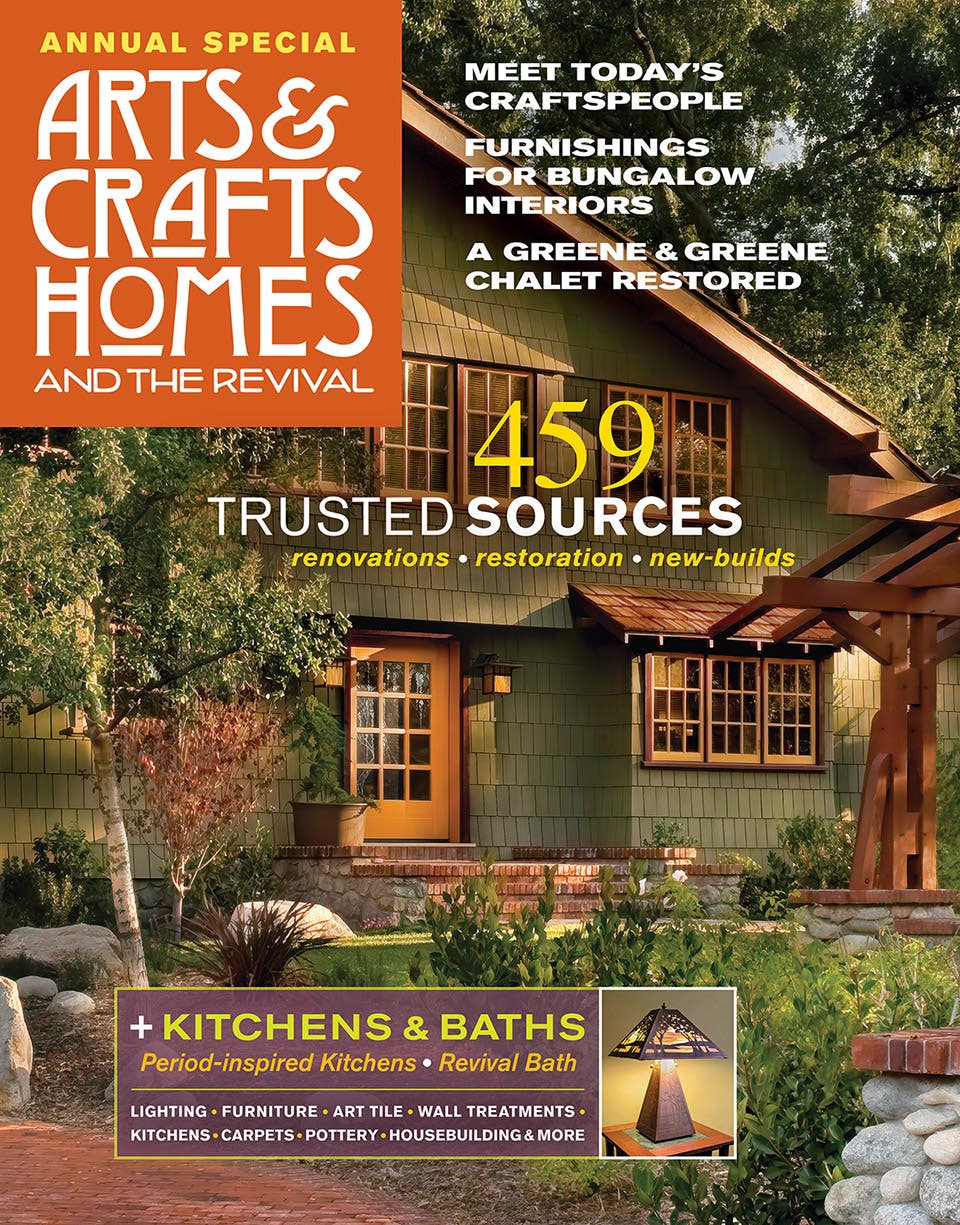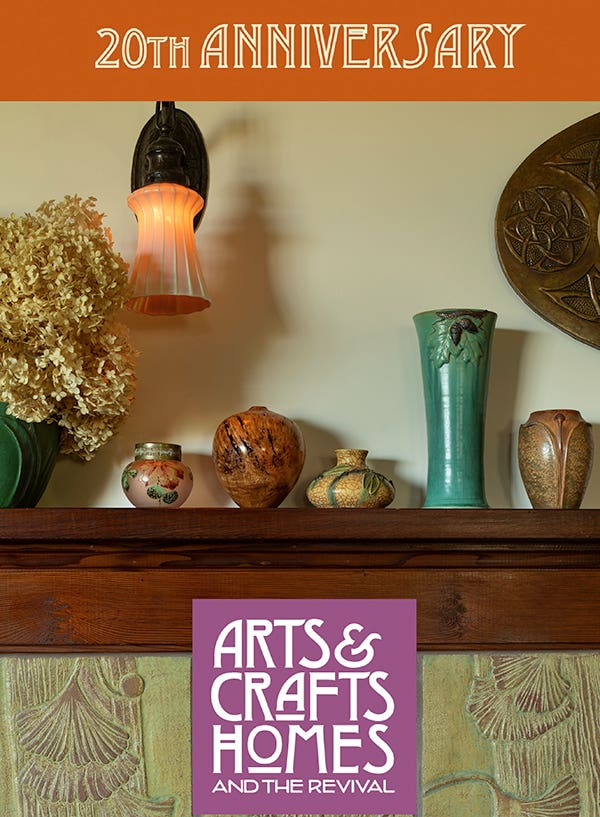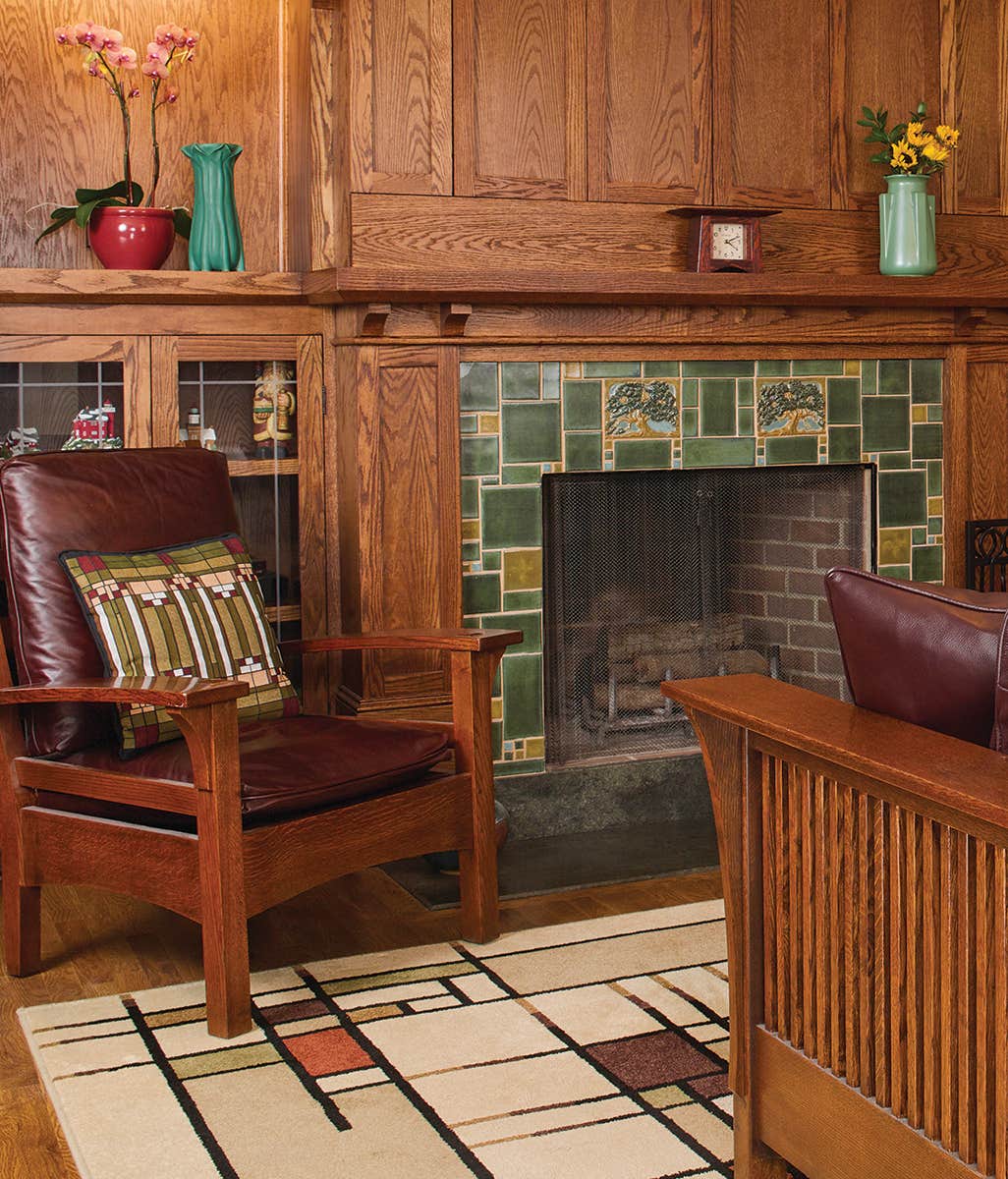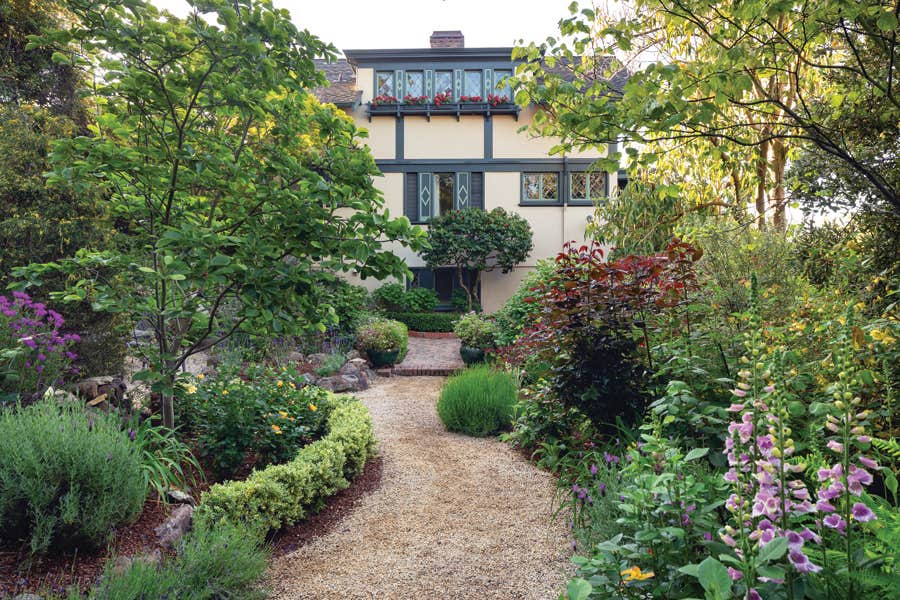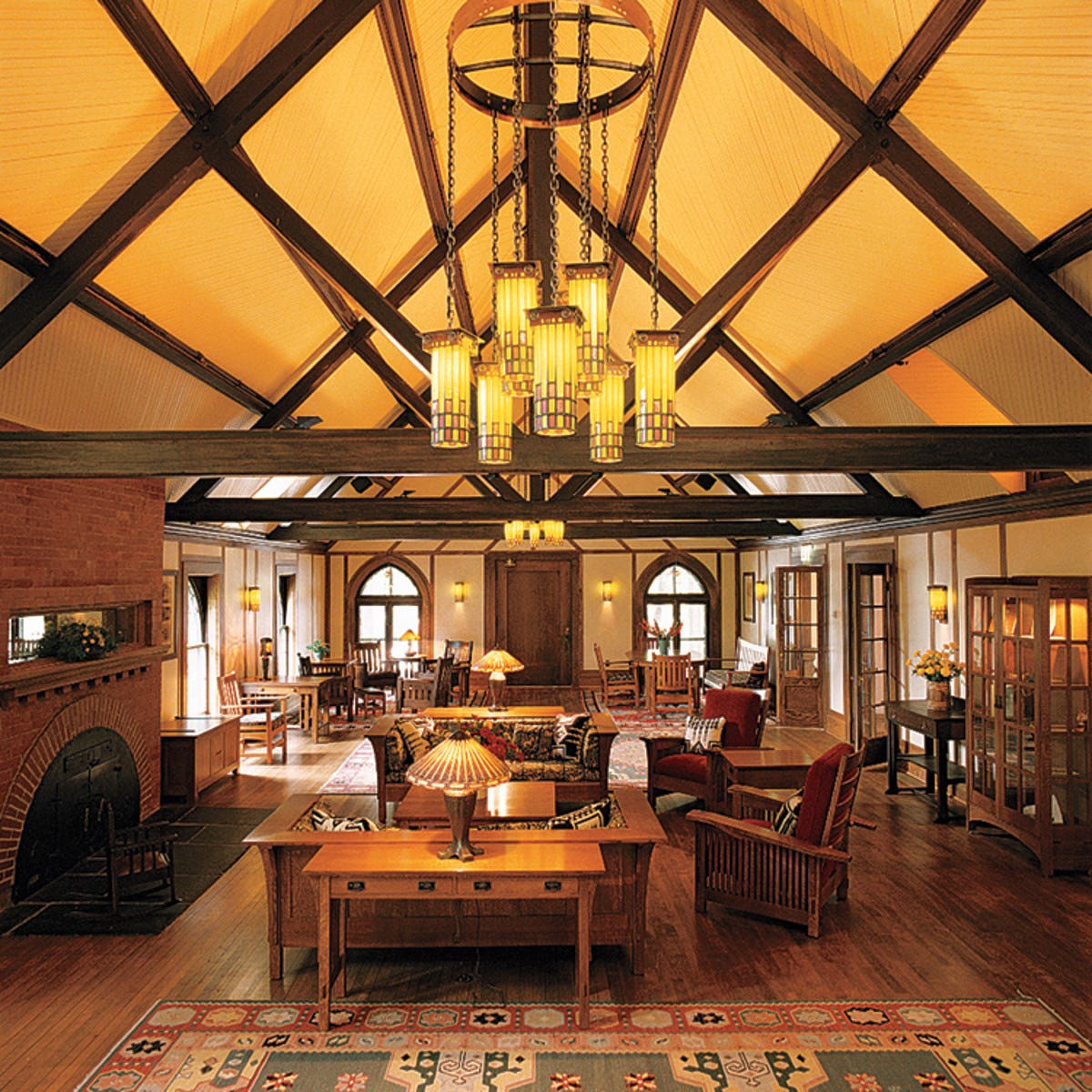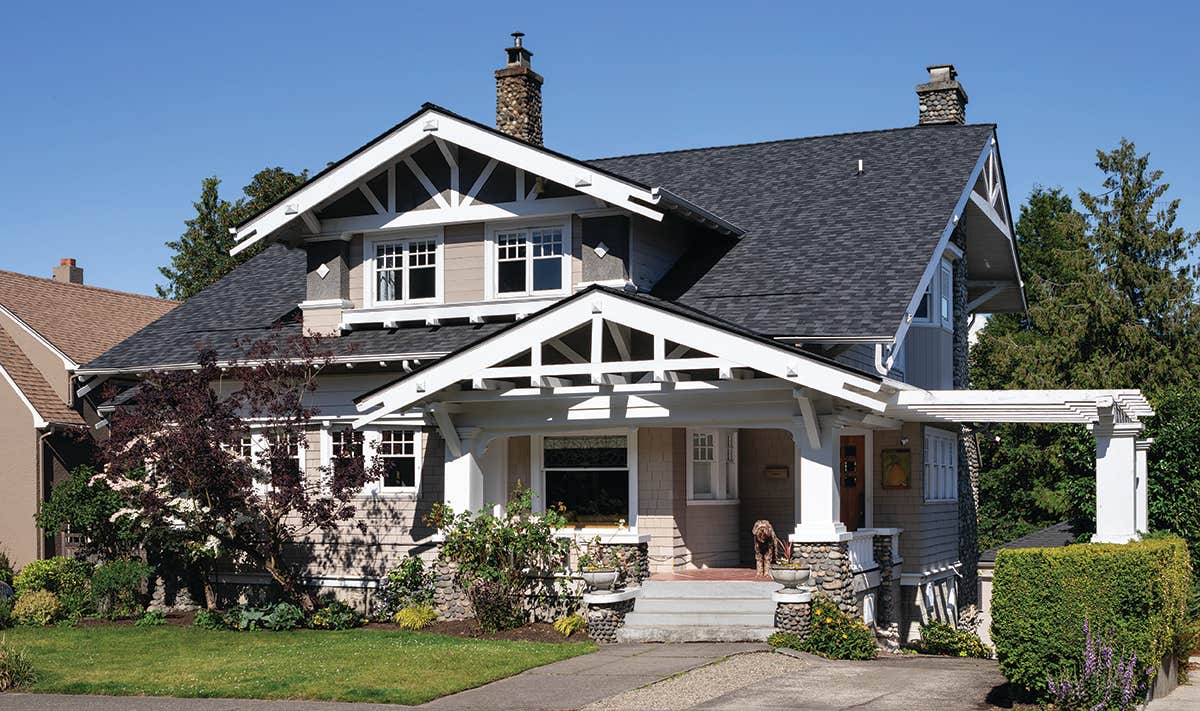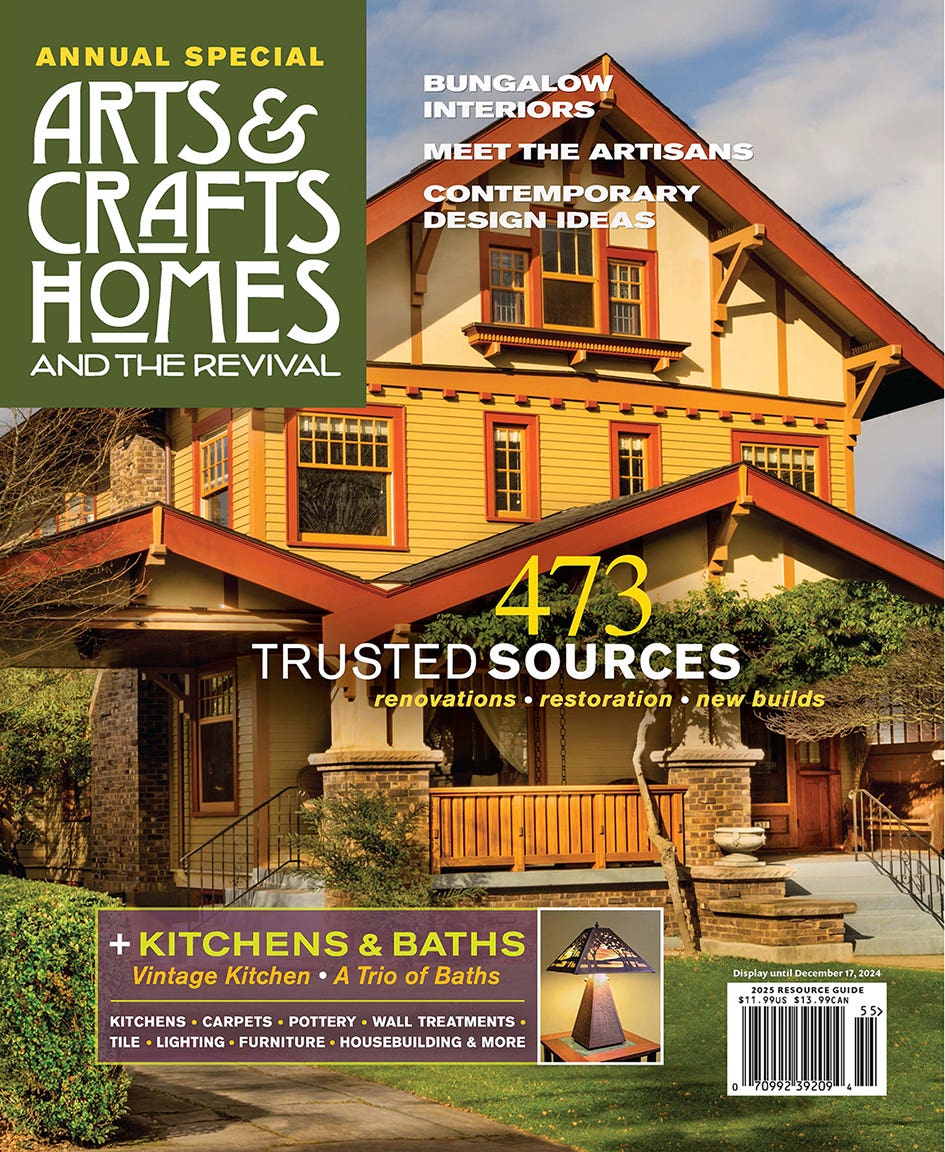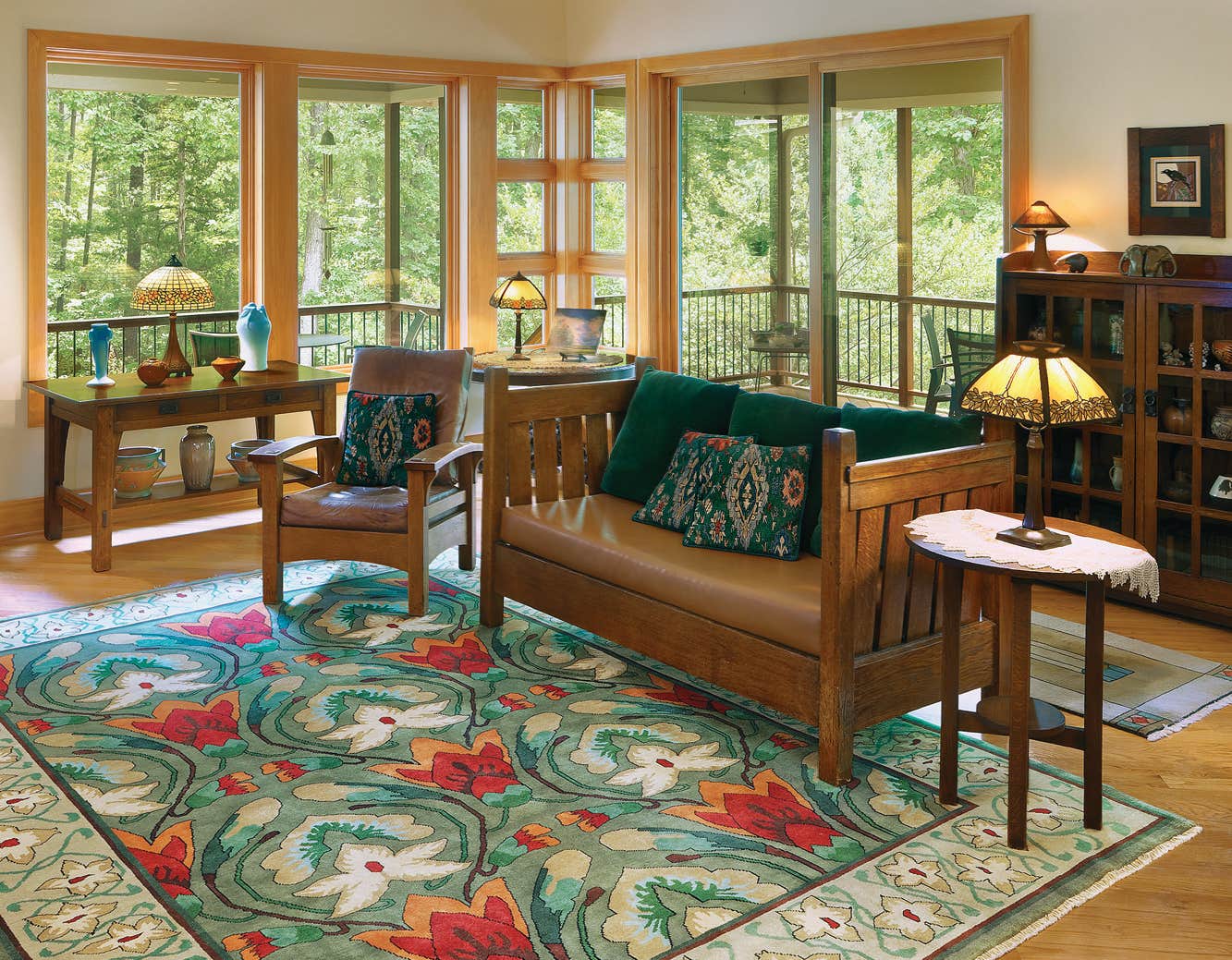A Perfect Marriage
Serial restorers end up in a 1920 bungalow in Portland, Oregon, which they’ve imbued with a timeless Asian aesthetic.
When Steve Austin and Cathy Hitchcock decided to leave their condo for a small house, they gave their real-estate agent a list of must-haves—and said not to contact them while they vacationed in Japan. Having found what might be the perfect property, the agent promptly ignored that proviso. Emailed photos showed that the bungalow fulfilled every wish: single-storey, garage, oak floors, wood windows, original kitchen and bath, a fireplace, and even room for Steve’s piano.
“We were annoyed for about a minute,” Cathy says, “until we looked at the photos—and then I worried it would sell before we got back!”
The 1920 house pays lip service to Colonial Revival with its colonnaded portico entry, but the windows and interior trim lean toward American Arts & Crafts. Located in Portland’s historic Irvington neighborhood, the bungalow offers a trim 1,630 square feet. At the time of construction, design restrictions required each house be different from its neighbor, giving this area the architectural diversity of more exclusive enclaves.
The two previous owners had been good to the house. Most recent owner Chris Healy had landscaped the lush back garden, torn out overgrown rhododendrons in front to replace them with a camellia and boxwood hedge, and added a box-beam ceiling, a period built-in, and the vintage pillbox toilet. Before Chris, owner Bianca Hart had re-plastered the ceilings, upgraded nonworking windows with handsome replacements, refinished the floors (personally countersinking thousands of nails), and, most significantly, added French doors between the breakfast room and a staircase to the garden.
Steve Austin and Cathy Hitchcock picked up the thread, carrying out a dramatic new look in just six months. Already painted black when the couple arrived, wood trim fits well with the aesthetic cued by a long-standing collection of Asian antiques. As it turned out, the couple’s trajectory of interests followed the evolution of design: they started out with Asian antiques, incorporated them as oriental exotica in several Victorian homes, and returned to an appropriate Japanese aesthetic in this Arts & Crafts bungalow.
“When Americans rebelled against ornate Victorian decorating,” Steve explains, “they looked toward the British Arts & Crafts movement and to other ‘modern’ design influenced by Japanese art and interiors.”
“Here, I didn’t want everything to be Stickley,” Cathy adds. It was her idea to cover the white walls with grasscloth wallpaper to create flow between rooms and enhance the ebony-color woodwork. Asian antiques do the rest: the yoshido screens that separate spaces within rooms; the 19th-century hibachi (historically used to serve tea brewed over charcoal), in use as a coffee table; the gakubuchi signage over the arch between living and dining rooms; a kakejiku scroll in the entry; the Chinese sang-de-boeuf vase standing guard over the original Arts & Crafts fireplace.
The couple did agonize over whether to leave the custom shoji screens they’d built for the dining-room window in their postwar condo. “The fenestration of a 1940s building has nothing to do with that of a 1920s house,” says Steve. “So I thought it would be impossible to reuse the screens. But turns out, they are a perfect fit in the dining room.”
Adjusting to black cabinets in the kitchen took a while. “At first,” says Steve, “I thought the black would have to go. Over time, though, it grew on us, and besides: what would we do with a black range and dishwasher? It’s an unusual kitchen but we’ve come to love it.”
The hand-dyed indigo ikat (kasuri in Japanese) wall hanging is the highlight of the dining room. They spent hours negotiating to buy it in Kyoto at the famed Aizen Kobo shop, with the help of a bemused translator.
Steve explains that their wallpaper hangers had said they would not be able to match the seams in the grasscloth, because it’s a natural product. “They were right about grasscloth,” Cathy says, “but it doesn’t matter, because the indigo wall-hanging and our shoji screens draw the eye away from any seams.”
The three motifs that appear on the wall hanging—pine trees, bamboo, and plum blossoms—represent fortitude to the Japanese, because they all survive grueling winters. Cathy and Steve remember all the travels and stories that are behind each object, which have brought them laughter, beauty, and joy—as has this house, made by a marriage of two far-flung aesthetic visions.
Donna Pizzi is a writer and producer for film and print, and co-owner of Blackstone Edge Studios with her husband, photographer Philip Clayton–Thompson. Over three decades, Pizzi has scouted out and written countless articles about home restoration for Arts & Crafts Homes and Old House Journal.

